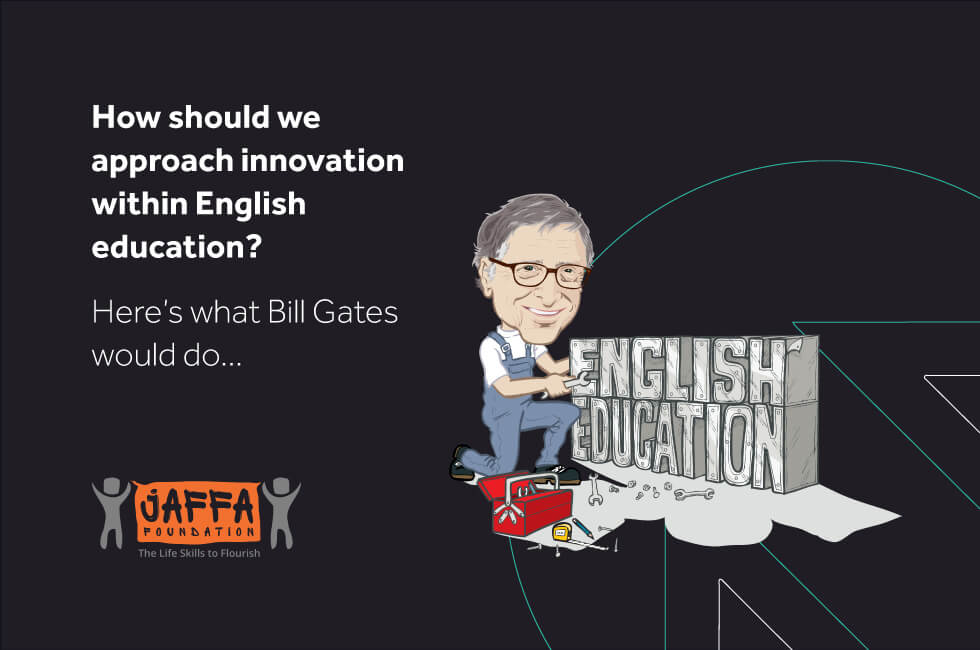As we move into the second year of our work at the Foundation for Education Development (FED) and following the launch of the FED National Education Consultation Report, David Jaffa, a FED Council Member, has written a thinkpiece on innovation within the English education system and what we can learn from other sectors.
David Jaffa founded SAM Learning, an online learning tool for GCSE and KS3 used in hundreds of secondary schools in the UK, and more recently the National Talent Academy, which provides cutting edge qualifications for a changing workplace aimed at students aged 14-19. David received the BETT Outstanding Achievement Award 2021 for his lifetime achievements in EdTech. The Jaffa Foundation was founded in 2014 by David and Maxine Jaffa with a mission to promote life skills for young people.
How should we approach innovation within English education? Here’s what Bill Gates would do…

For decades, the pace of change in our education system has lagged behind the pace of innovation in society as a whole. Could looking at the issues through Bill Gates’s lens help us pave a way forward?
Since his exit from Microsoft in March 2020, Bill Gates has been focusing his wisdom less on software and more on saving our planet. His 2021 book, How to Avoid a Climate Disaster, lays out a framework for innovation in tackling climate change. And, if you ask me, we can apply the very same framework to innovation in education.
Gates’s framework calls for private sector, state sector and third sector actors to collaborate in cycles of creating solutions, testing solutions and scaling up what works.
Creating high-potential solutions
It’s relatively easy and inexpensive to create new models within English education. Innovation in education requires few completely novel inventions or infrastructure changes and, indeed, many people are already implementing new concepts and ideas.
BETT 2022 (the British Educational Training and Technology Show), for example, will see 1,200 suppliers exhibit in London next January — many of them people with minimal experience or funding, but a vision for how to improve some aspects of education instead. A number of them are ex-teachers who know the inner workings of the English education system and have felt first-hand the need for change.
Innovators are out there, is what I’m saying. The education sector simply needs to encourage an active market for areas like soft skills, careers education, character development, financial literacy, and support for people who are not neurotypical. These active markets already exist in adjacent spaces, and we’re missing out by not having one for education.
Where high-potential solutions do exist, education professionals need to jump on board and carry them to the testing phase.
Piloting high-potential solutions to see what works
Testing is where things get a little harder for those of us seeking to innovate within education. Bill Gates describes the proof/testing phase of innovation as “The valley of death, where good ideas go to die.” And that will sound all too familiar to many of you reading this.
Unfortunately, there are limited opportunities to try out new initiatives in our current system. We need to test new programmes in ordinary schools and colleges to iron out problems and growing pains. And we need to carry out this process in multiple contexts before even considering a nationwide rollout. Without this rigorous testing, we can’t expect changes to our education system to stick.
But there’s a vicious cycle when it comes to getting buy-in from stakeholders. Most education leaders demand proof that a new programme will benefit their institution before they try it out. This makes sense, of course, but because there’s little overall support for new endeavours, that proof just doesn’t exist.
You’re starting to see the issue here, I’m sure. Innovation within education stalls because we don’t have a viable approach to piloting and testing high-potential ideas, throwing everything else off balance.
In my eyes, there is no structure within the English education system for how innovation should be conducted. And this is our most significant barrier to positive change.
So how do we fix it? Funnily enough, we used to manage innovation a lot better than we do now. In the mid-2000s, the Local Education Authority (LEA) network of ICT Advisors was the proving ground for EdTech solutions like my own venture, SAM Learning. But the LEAs were disbanded in 2010, taking much of our capacity for innovation with them. If we can create a new network of organisations that try out innovations, we have a shot at pushing new ideas through the testing process and into wider use.
At the moment, good ideas often languish and never get the chance to make a difference before slowly fading away. With a new test network, we can start to get these good ideas into our schools. However, that next step can’t happen without removing regulatory barriers.
Remove regulatory barriers to high-potential ideas
As we know, educational regulations stipulate what schools can and cannot teach. But these regulations simply aren’t keeping up with the changing needs of our modern society.
For example, accountability frameworks focus too narrowly on academic skills. Schools and colleges are penalised for permitting students time away from accredited courses to spend on courses that don’t count towards school and college performance tables.
One way to tackle this problem is to create a programme where test-bed schools can get credit for unapproved courses and qualifications that could benefit their students.
FED’s 10-year plan for education in England will also need to recommend how to align the relevant frameworks with the vision for education we want versus the frameworks we currently have. Relevant existing frameworks include the school and college performance tables, Regulated Qualifications Framework (RQF), Sector-Specific Areas, and the UCAS tariff.
Finally, scaling up what works
Once programmes and initiatives have been proven to work in a variety of settings, they should be scaled up and adopted across the education system. Unfortunately, though, education has some serious scale-up challenges, too.
Right now, our system is laser-focused on academic subjects and performance, making it incredibly challenging to adopt additional, non-academic programmes even if they have been tested and proven to work.
When scaling up, we run into the issue of regulatory barriers again. There’s a lack of demand for innovation — educational programmes that aren’t accredited are not seen as a priority.
We see this often with workplace readiness and character development programmes. Workplace readiness training can help students prepare for the job market, teaching young people the commonly-expected skills that will help them to succeed. Spending time on character development, such as empathy and compassion, resilience and personal responsibility, can have massive benefits not just in academic performance and future employment, but in every aspect of their lives.
To get these programmes into action, schools need to be encouraged to look beyond the standard, accredited programmes. It all comes down to scope — and the scope is often too narrow.
When it comes to scaling up, there are several possible solutions. We could significantly streamline the accreditation of new courses from recognised test-bed schools; if we cut down accreditation time from years to months, we would see much better results. Combining this approach with additional school and college performance table credits would likely make schools more open to wider adoption.
What if we could also create a pipeline of tested, proven solutions for Secretaries of State to point to during the public sector spending review? In that case, we could increase per-student funding and make a substantial difference to education.
At the end of the day, we have to try
The above framework clearly shows that education innovation needs an active market of high-potential solutions — so that multiple ideas can be tried, tweaked, and learnt from as we go, failures and all.
If we teach students it’s important to try, fail, and learn from our mistakes, we should be willing to take our own advice. We can make innovations within education, but we need to actually get started.
Click here to read more blog posts.
The FED are happy to share blogs. The views outlined are those of individual authors and do not necessarily reflect the views of the FED. Please contact us if you would like to submit a blog.



